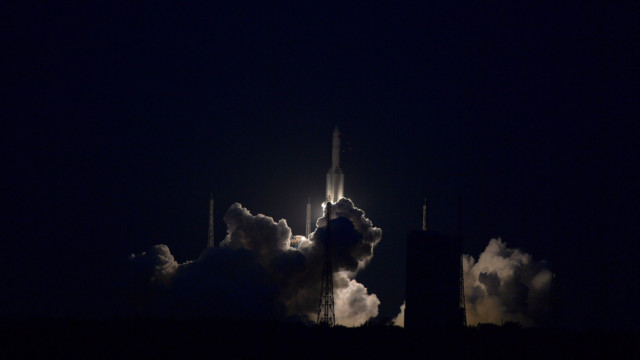Sunday evening’s launch of China’s Long March-5 Y2 rocket failed, despite what appeared to be a successful liftoff.
The rocket carrying the Shijian-18 communications satellite, blasted off from the Wenchang Space Launch Center in the southern China’s Hainan province at 7:23 p.m. local time, leaving a vast column of flame.
Officials said an abnormality was detected during the flight.
Experts from the China National Space Administration are investigating the cause, Xinhua reported.
Video from the live broadcast showed the rocket lifting off and shooting into the sky, with a voice-over indicating everything was going well.
It was not clear from the live broadcast whether anything had gone wrong. It also was not clear whether the rocket had entered its orbit.
Several launches of the Long March-5 were scheduled in preparation for China’s lunar probe, manned space station, and Mars probe missions, according to Xinhua.
Sunday’s launch was to be the last drill before the rocket was to carry the Chang’e-5 lunar probe later this year, which will return with samples. A successful mission would have marked the completion of the trial run.
The fueling started at 4:30 pm Saturday, the space administration said in a news release. The rocket uses environmentally friendly fuel, including kerosene, liquid hydrogen, and liquid oxygen, rather than highly toxic propellants.
The launch was meant to test China’s new Dongfanghong-5 (DFH-5) satellite platform and carry out in-orbit experiments including Q/V band satellite communication, satellite-ground laser communication technologies, and an advanced Hull electric propulsion system.
The rocket was China’s second heavy-lift carrier rocket and has a liftoff weight of 870 metric tons, a maximum payload capacity of 25 tons to low Earth orbit, and 14 tons to geosynchronous transfer orbit — more than twice the capacity of previous Long March model.
The first heavy-lift rocket was launched in November 2016, also from Wechang.
With a weight of 7.5 tonnes, the Shijian-18 satellite represents China’s latest technology and is the heaviest satellite China has ever launched into space.
Story by CGTN, Associated Press, Xinhua, and China Daily.
 CGTN America
CGTN America The Long March 5 heavy-lift rocket failed on July 2, 2017 due to an abnormality during the flight following what appeared to be a successful liftoff. (Photo by Xinhua News)
The Long March 5 heavy-lift rocket failed on July 2, 2017 due to an abnormality during the flight following what appeared to be a successful liftoff. (Photo by Xinhua News)
